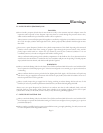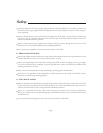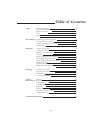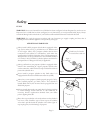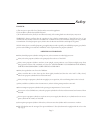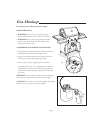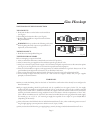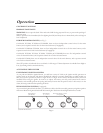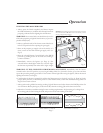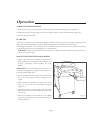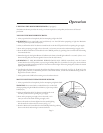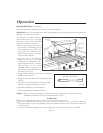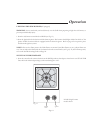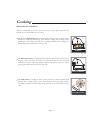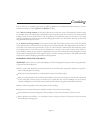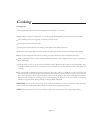Special offers from our partners!

Find Replacement BBQ Parts for 20,308 Models. Repair your BBQ today.

LIGHTING THE MAIN BURNERS
WARNING:
WARNING: IF THE SELECTED BURNER DOES NOT LIGHT,
1.
Never stand withyourheaddirectlyover the
Grill when preparing to light the mainburners, to prevent
possible bodily injury.
2.
3.
4.
5.
immediately turn the burner
control knob to the OFF position, to prevent gas buildup. Wait five (5) minutes for the gas to clear and then
repeat the preceding starting procedure. If the burner will not light when using the Igniter, follow the match
lighting instructions (see Page 8).
6.
7.
8.
Page 7
Confirm that the burner is properly lit and that the flame pattern is as desired, (see Figs. 9a, 9b & 9c, for the
proper flame patterns). If the flame pattern is other than normal, consult the Troubleshooting Guide on
Page 23 for corrective action.
Always preheat the grill before starting cooking. Light all burners and adjust them to the HIGH position for
5 to 10 minutes. Beforeplacinganyfood on the Grill, clean the cooking grids with a brasswirebrush.
Adjust the Controls to amediumsettingfor most cooking requirements. A lightcoatingof cooking oil on
the cooking grids, beforeheatingtheGrill, will prevent foods fromsticking totheGrill.
Always open the Hood completely and always inspect
the Grill and burners to confirm that all components are
properly positioned before lighting themainburners.
Always confirm that all of the burner control knobs are
in the OFF position beforeopeningthegas supply.
Turn on the propane gas supply valve at the tank (1 to 2
turns) or turn on the main natural gas supply valve (see
Fig. 8).
Turn the selected Burner Control Knob to the HIGH
position by pushing down on the knob and turning it
counter-clockwise.
Immediately activate the Igniter (see Page 6). The
selected burner should light within five seconds. Light
the burners sequentially from either left to right or right
Operation
NOTE: When lighting the grill for the firsttime, burn with
the main burners on HIGH for at least 30 minutes, to burn
off any manufacturingresidues.
Fig. 8
Fig. 9a Fig. 9b
Fig. 9c
Normal: Soft blue flames Out of Adjustment: Noisy, hard blue
flames indicate too much air
Poor Combustion: Wavy yellow
flames indicate too little air.



